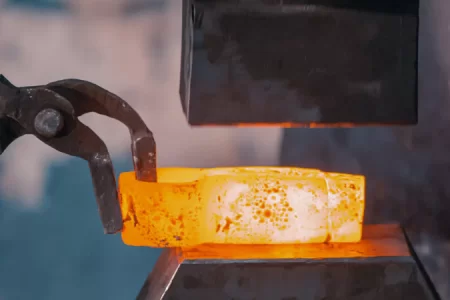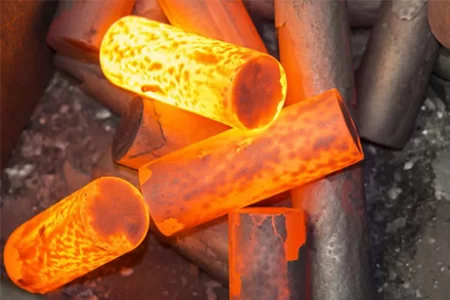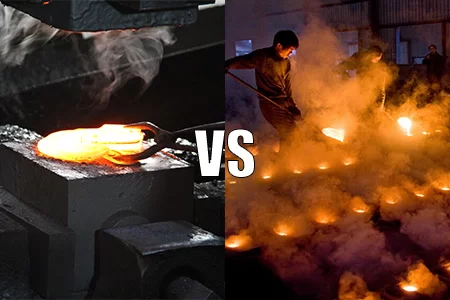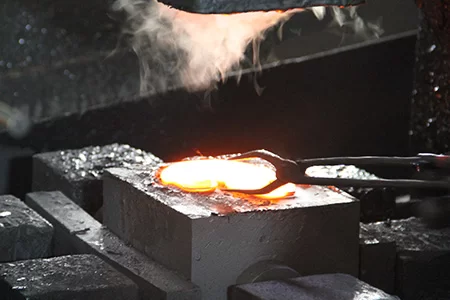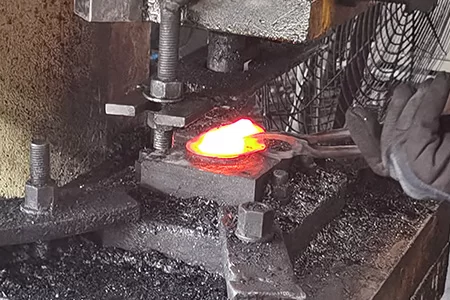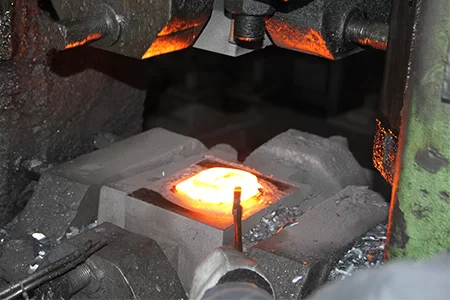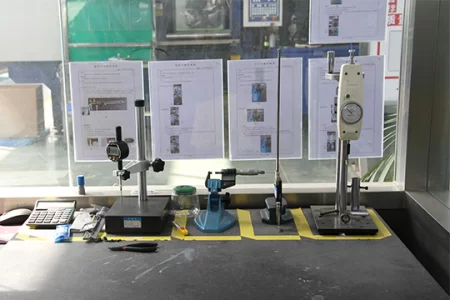By sharing knowledge, experience and views in the field of forging technology, we help you understand, learn and apply relevant technologies.

Hulk Metal Forging Technology
Share technical experience
-
Home>
-
Blog>
-
Technology>
A step-by-step guide to ordering forged steel products

Understand Your Requirements
Understanding your specific project requirements is the cornerstone of a successful steel forging process. The more detailed and accurate the information provided, the better the final forged product will meet performance expectations. First, define the dimensions of the part. Exact measurements are essential to ensure compatibility with other components and to avoid performance issues. You should specify the tolerances, critical points, and any interfaces with other parts.
Next, select the material that best suits your application. Different steel grades and alloys exhibit unique properties such as tensile strength, ductility, hardness, and corrosion resistance. For example, 4140 steel may be ideal for components requiring high toughness, while 316 stainless steel offers excellent corrosion resistance for marine environments.
The weight of the part is another key consideration, especially in industries like automotive and aerospace, where weight reduction directly impacts fuel efficiency and performance. Provide an acceptable weight range to your forging partner.
Understand the application environment in which the forged part will operate. Consider factors such as temperature extremes, exposure to chemicals or moisture, mechanical stresses, and impact loads. All of these can affect material performance and longevity.
Determine the required quantity of parts. If you anticipate increasing production in the future, communicate this upfront. It allows the forging company to plan tooling and production scalability accordingly.
Establish acceptable tolerances to ensure the forged product fits within the required specification range. Tight tolerances might increase cost, but they are critical in precision applications.
Finally, identify any finishing requirements such as heat treatment, coating (e.g., galvanizing, anodizing), or surface machining. These post-forging processes significantly influence the part’s performance, durability, and appearance.
If you need help defining these specifications, your forging partner can provide technical support. For example, at HULK Metal, our engineering team collaborates with clients to select suitable materials and forging methods that optimize performance and cost.
Select a Steel Forging Partner
Once your project requirements are defined, the next vital step is selecting the right forging partner. Choosing the right steel forging company can significantly affect the quality, consistency, and timeliness of your products. Begin by assessing the track record of potential suppliers. Look for companies in your industry that have a history of delivering complex forged parts. Case studies and client testimonials are useful tools to evaluate reliability.
Next, ensure the forging company holds appropriate certifications, such as ISO 9001, ISO/TS 16949, or AS9100 for aerospace applications. These certifications indicate that the company adheres to international quality management systems, ensuring repeatable, high-quality output.
Evaluate the company’s experience in handling similar projects. Experienced suppliers have likely dealt with a broad range of challenges and developed solutions to ensure successful outcomes. A seasoned forging partner can offer suggestions that may save time and reduce costs.
Assess the capabilities of the supplier in terms of equipment and technical capacity. Does the company have the right forging presses (open die, closed die, ring rolling)? Can they handle the part size, volume, and alloy complexity? Modern CNC machining centers, in-house heat treatment facilities, and metallurgical labs are strong indicators of a capable partner.
Lastly, prioritize communication and customer service. Open lines of communication are essential for resolving issues quickly and ensuring project milestones are met. A responsive team that listens to your needs and communicates proactively is invaluable throughout the forging process.
At HULK Metal, we pride ourselves on our end-to-end support, experienced team, and state-of-the-art forging and testing facilities that ensure your forged components are delivered on time and to specification.
Enquire About Cost and Lead Time
After identifying a capable steel forging company, the next step is to obtain a detailed cost estimate and understand the expected lead time. Transparent pricing and realistic timelines help manage expectations and facilitate planning.
The cost estimate should include:
Material Costs: Depending on the alloy selected, raw material prices can vary significantly. Exotic alloys are typically more expensive.
Labor Costs: Skilled labor for forging setup, operation, inspection, and finishing processes.
Tooling Costs: For closed-die forging, tooling (dies and molds) may need to be custom-made. These are often one-time expenses, but should be considered.
Secondary Processes: Heat treatment, machining, coating, and other finishing processes add to the base cost.
Overhead Costs: Utilities, maintenance, and administrative costs are embedded in the production process.
Shipping Costs: Especially relevant for international orders or heavy components.
Clarify lead time to avoid disruptions. This includes:
Preparation Time: Time to source materials, create dies, and set up production.
Production Time: Actual forging, heat treating, and any machining or finishing required.
Inspection and Packing: Time required for quality checks, documentation, and safe packaging.
Shipping Time: Time for logistics and delivery to your site, depending on the destination and transportation mode.
A reliable forging partner like HULK Metal will provide a clear breakdown of costs and timelines and keep you updated throughout the process.
Provide Drawing or Sample
Providing a detailed technical drawing, 3D model, or physical sample is essential for initiating the forging process. These inputs help the engineering team understand the specifications, tolerances, and performance expectations of the final part.
Drawings should include:
Exact dimensions and tolerances
Material specifications
Surface finish requirements
Critical features and areas
Assembly interfaces, if applicable
Physical samples can be especially helpful when dealing with legacy parts or when digital files are unavailable. The forging company's engineers will use these inputs to evaluate manufacturability and suggest design modifications if needed.
A capable engineering team can:
Recommend changes that simplify the forging process
Optimize grain flow for improved strength
Reduce excess material and machining time
Ensure the design aligns with forging best practices
HULK Metal's design and engineering team uses advanced CAD and simulation tools to analyze part geometry, predict metal flow, and ensure defects like voids or cracks are minimized. By working collaboratively in this stage, we help customers avoid costly redesigns and production delays.
Receive Sample Confirmation
Before launching full-scale production, it is standard to produce prototype samples for evaluation. These initial samples are used to validate that the forged part meets all technical and functional specifications.
Sample confirmation involves:
Dimensional Checks: Using precision measurement tools like calipers and CMMs (Coordinate Measuring Machines) to ensure the part matches the drawing.
Visual Inspection: Checking for surface defects, correct shape, and finish.
Mechanical Testing: In some cases, tensile, hardness, or impact testing may be required to verify material properties.
The results of these evaluations are typically documented in a first article inspection (FAI) report. The customer reviews the sample and the report to approve the part or request revisions.
If any deviations are identified, the forging company should address them promptly by adjusting tooling, refining the process, or recommending design changes. This phase ensures that mass production proceeds smoothly without surprises.
HULK Metal provides sample parts along with complete inspection reports and encourages customer feedback to ensure the final part meets all expectations.
Place Your Order
After sample approval, the final step is placing the official purchase order (PO). This formalizes the agreement between you and the forging company and initiates full-scale production.
The purchase order should clearly state:
Finalized design and drawings
Approved material grade
Total quantity of parts
Delivery schedule or milestones
Final pricing and payment terms
Any post-processing or testing requirements
Review all terms and conditions to ensure they match what was discussed during the quotation and sampling phases. Confirm the production timeline, payment schedule (e.g., deposit, balance upon delivery), and delivery logistics.
It's important to maintain open communication even after placing the order. A good forging partner will update you on production progress, quality checks, and shipment status.
At HULK Metal, we ensure full transparency from the moment the PO is received. Our production team provides regular updates and quality reports, and our logistics team ensures safe and timely delivery to your site.
By carefully following these six comprehensive steps, you can streamline the process of ordering forged steel products, reduce risks, and ensure the final parts meet your specific needs and high-quality standards.
Article Navigation
Article Navigation
Industries
Foundries
-

August.26, 2024
How to use Jaw Wire Grips?
READ MORE
-

July.01, 2024
Difference between hot forging and cold forging
READ MORE
-

June.27, 2024
What are the advantages and disadvantages of the hot forging process?
READ MORE
-

March.03, 2025
Steel Forging vs. Steel Casting: Exploring the Differences
READ MORE
-

February.28, 2025
Open Die Forging: Exploring the forging process and the key factors in selecting a OEM
READ MORE
-

February.24, 2025
Key Considerations for Closed Die Forging
READ MORE
-

February.18, 2025
Factors to consider when purchasing custom forgings
READ MORE
-

February.14, 2025
HULK Metal's hot forging quality control
READ MORE




